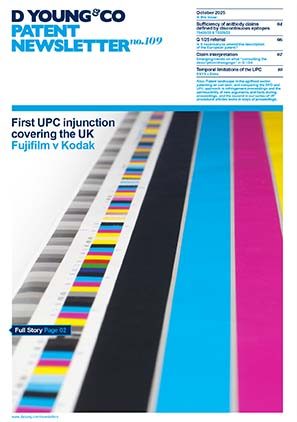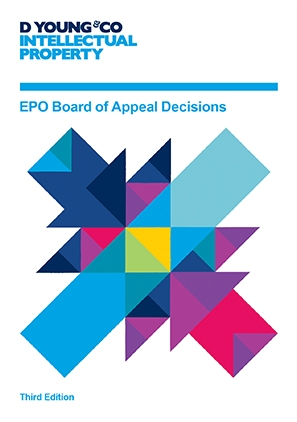Intelligent (patent) agents: should the patent profession be afraid of AI?
There’s been lots of interest in patenting artificial intelligence recently. But what happens when AI does the patenting? Although the EPO has so far rejected the notion of AI being an inventor (see EP 18275163 and EP 18275174), what about when AI is able to do the job of a patent attorney? Should patent attorneys be afraid their skills might be made redundant?
If this sounds a bit far fetched, don’t be so sure. A number of organisations are looking into creating AI which can draft patent applications. For example, California-based Specifio, Inc. were recently awarded a US patent (US 10417341) for a machine-learning and rule-based technique for creating patent specifications.
The technology works by analysing claims written by a patent attorney, breaking the claims up into “language units”, converting the language units from “patentese” to prose using natural language processing and using the converted language units with appropriate data structures to generate the patent description. Apparently, the description of US 10417341 itself was written without human intervention using this technique.
Are the days of the human patent attorney numbered?
This seems unlikely. Tools like those of Specifio are more likely to complement the skills of a human rather than replace them (in fact, Specifio itself asserts this is the purpose of their product). This is because AI is very good at some tasks but finds other tasks very difficult.
Although there are many variants, AI essentially works by analysing known data with certain characteristics and using that analysis to recognise or classify new data. For example, AI can be trained to recognise new pictures of cats by being provided with lots of previous pictures, some of cats and some of other objects, and being told which pictures have cats and which don’t. With a sufficient number and variation of pictures during training, the AI can then be presented with a previously unseen picture and can determine, surprisingly accurately, whether or not that picture has a cat in it. AI in other applications, such as natural language processing, works in a similar way.
This approach works very well for certain tasks. For example, when drafting a patent application, natural language processing may be very effective at turning claim language into readable prose. It may be good at using wording which is most appropriate for the technical field and/or jurisdictions of interest (for example, to try to avoid USC 101 objections for software in the US). It may allow the rote tasks of patent drafting (for example, the generation of corresponding apparatus claims from method claims and generation of the title, technical field and abstract) to be successfully automated.
For inventions implemented using computer software, where each feature of the invention is essentially one of a sequence of steps in an algorithm, it may even be able to automatically write about functionally defined “modules” or “circuitry” which carry out each respective step.
The AI approach is unlikely to work well for other tasks, however. The nature of a patentable invention is that it has at least one feature which is new and inventive. It is difficult to see how an AI algorithm might define such a feature in a claim based on previous information since, by virtue of this feature being new and inventive, it won’t have been adequately defined before.
Writing novel and inventive claims is therefore likely something that only a human patent attorney can do by talking to an inventor, seeing a prototype and/or reading written documentation from an inventor so they understand the invention.
Embodiments of the invention must also be defined in the description. This includes providing more details about the claimed novel and inventive features and thus also requires an understanding of the claimed features and non-limiting examples of how they might be implemented.
AI trips up because it lacks the understanding required to both define the novel and inventive features of an invention in the claims and to elaborate by discussing detailed examples of those features in the description. These tasks require, for the time being at least, a human patent attorney who can understand a new invention at a conceptual level rather than an AI algorithm which has been trained to replicate and arrange patent semantics (no matter how well) by looking at lots of previous patent applications and by following a set of rules.
Such an AI algorithm is akin to a person being shown lots of previous patent applications so they learn by rote what a patent application contains (description, drawings, claims and abstract), the format, the style of writing, and suchlike, and then being asked to write a new patent application for an invention from scratch without an understanding of what the new invention is, how it works and why it is better than what came before. The patent application might look good and read well, especially if the person is a diligent student. However, it will be missing the information which defines and elaborates on the new and inventive features of the invention, since the understanding necessary to create this information was never there.
So, is AI patent drafting dead in the water?
Well, no. There are lots of parts of the patent drafting process which may arguably be improved using well designed AI.
Lots of parts of a patent application involve repetition or near repetition of the claim wording (for example, to ensure sufficient support for the claim wording in the description, to map features of the embodiments to features of the claims, to generate corresponding apparatus claims from method claims and to generate suitable title, technical field and abstract information). Any AI which successfully sees to this automatically should be welcomed, since it frees up time for the patent attorney to concentrate on claiming and describing the novel and inventive features of the invention as well as possible. If the AI were able to do this whilst creating a suitable structure of the description wording, this would also be beneficial.
One can imagine an attorney drafting a set of claims which the AI then compiles into well-reading prose in a matter of seconds. The attorney could then simply read through the prose and elaborate on specific embodiments of the described features (in particular, the novel and inventive features) as and when necessary as opposed to writing the entire description from scratch. This would save valuable time for the attorney and money for the client.
It therefore seems the future of good-quality, efficiently-drafted patent applications may be achieved through a partnership between human patent attorneys and AI in the coming years. If we humans stick to what we are good at and the AI sticks to what the AI is good at, the result will hopefully be a successful partnership in which the result is better than what either might achieve individually.
Perhaps we will eventually have AI which can sit down with an inventor, understand the invention, think of additional embodiments and join everyone for dinner before knuckling down to drafting the patent application the next day. Until then, however, it’ll be business as usual for your D Young & Co advisor.


